Winter has set in and although the day is a bit chilly – the atmosphere surrounding the ESOMAR Qualitative 2011 conference in Vienna is full of warmth and connection in a way that seems quite unique and special to Qualies and Qualitative research.
This year’s ESOMAR Qualitative conference is based on the theme – Embrace, Inspire and Celebrate – and it is under that mantra that the 174 participants from over 40 countries have gathered to bring out the best that qualitative research has to offer. The ESOMAR Qualitative Conference is unique in it’s globalness and range of subjects and the presentations from this year highlight that as we welcome speakers from across the globe covering topics such as using qualitative research to help prevent suicides to finding out why/how Gen. Y’ers make things cool to using mobile phones to connect with the growing emerging market populations.
Dan Foreman, ESOMAR Council member and Qualitative Programme Committee member, welcomed the delegates to Vienna – the city of Dreams – (had to have at least one reference to Sigmund Freud) and explained that the basis for this conference was to discover and interpret human truths for greater consumer understanding. In a time when “”change and uncertainty” have been dominating global news, it is as important as ever for researchers to be the change agents in fuelling brand and innovation success across business and society.
Sandrine McClure, Programme Committee Chair then walked everyone through the ins and outs of the programme and days to follow before handing off to Ben Smithee, fellow Programme Committee member, who introduced keynotes Leslie and Tim Ishii. The Ishii’s were gifted with creativity – Leslie is a well-known actress, often recognised from her role on the television programme LOST and her brother Tim, is a renowned jazz musician and professor. Connecting Qualies to their inner creativity is their goal for the conference, and Ben was able to catch a few moments with them to get insights on how they think the infusion of creativity can make Qualitative research even better.
Noting that qual tools, techniques, research designs have traditionally been based off of a western perspective, Piyul and Pia explained how the world’s move to global economies has caused a need to streamline “cookie-cutter” replication of tools and methods, even though many well-meaning organisations such as ESOMAR, QRCA, and AQR have worked hard at standardising albeit within a western template.
Looking into the Indian model, they found that at times “traditional qual” does work – usually with the top and most privileged segments of populations., however there are notable cultural challenges when dealing with the general populace:
- Patriarchal homes are often the norm and male members often feel entitled to participate and speak on behalf of the wife, even in areas that they have little to no involvement in – washing, dishes, etc…
- Privacy is often a luxury in homes with small numbers of rooms, but large numbers of inhabitants
- A cultural “need to please” and “save face” may not allow for getting past the “politeness barrier”
By tweaking and adjusting mainstream qual methodologies – Piyul and Pia – showed that actions such as converting paper diaries to self-administered flipcams- or mobile phone logs can bring about much more success – “even in very low socio-economic segments with little to no tech-literacy.” The integration of other family members into the process – husbands, sons and daughters – for data gathering has also allowed for a new reality on water reality/ gathering in these families (boosted interest & engagement, leverage curiosity, bypassed gatekeepers and higher authenticity). With over 700 million mobile phone connections and a history of oral storytelling, Piyul and Pia found this “solution” can help researchers get past many of the issues listed above.
Comparing the “standard” approach to this “new” one they found that with a few tweaks they were able to take into account cultural elements to minimise social pressures/issues with gender and get past gatekeepers, to access private spheres, was less intrusive and more authentic and gave them lots of surprises – footage of ‘off-limit’ areas/procedures. Use of mobiles allows for instant connections for questions/ follow up and allows for multiple options for getting good visuals footage.
Although some standardisations across multi-market qualitative projects may still be needed, by tweaking classic methodologies and consciously noting cultural differences we as researchers can enhance the value we bring to our clients.
Researching the Unsearchable: How research helps the Samaritans in their campaign to reduce suicide.
Following Pia and Piyul was another extremely interesting presentation on a subject that has a true global impact – suicide. According to the World Health Organisation an estimated 1 million people die by suicide every year.With this in mind – the UK’s Samaritans and Volante Research joined forces with British Network Rail to create a campaign to help the Samaritans reduce the 6000+ suicides in the UK each year. With over 200 deaths occurring on British railways each year, a five year partnership was developed between Samaritans and Network Rail to find out how to target this group of people who use the rail system to end their lives.
Firstly analysis was done to see who exactly was the target group. Researchers found that the profile of those likely to use railways to commit suicide were nearly all-white British men in their 30s and 40s, who worked manual labour jobs and had employment issues. As this profile fit the general profile for those committing suicide in Britain, Network Rail allowed the researchers to expand their research beyond train stations – to go into communities and off-rail sites i.e. non-station sites) where many of these suicides occur.
However, talking to these men to test the campaign advertisements proved no easy feat, as many did not trust the researchers and often the questions were of the type that provoked anger and necessitated individual talks. Therefore all sessions were held in neutral territory, i.e. local community centres and most of the interviews were spent getting to know the men, with only the last 15-20 minutes covering the ideas for the ads. Connecting with the men was key here – something Qualies know all too well.
Working with creative agency, Arthur London, an advertising campaign was created that connected with the men on a fundamental and “masculine” level – using images of boxers to highlight the message that if someone as tough as the boxer could contact and be helped by the Samaritans then it would also be ok for any man to call them. Testing taglines, they found that messages that evoked the idea of strength resonated well, and that avoided ideas of pity and judgement also worked best and made the men better undewrstand the necessity to seek help when in trouble and/or feeling lost or depressed. They also took the campaign into prisons – where Samaritans and inmate “listeners” aid the prison population in these instances. By slightly tweaking the campaign to show a more adaptable prison message “We’re in your corner” versus “ A Samaritan/Listener helped me find my strength”, this campaign resonated well in the prison context.
“The final ads worked brilliantly with people noting that they found the ads a powerful motivator for calling Samaritans – “There’s been times when I probably should have called Samaritans but for some reason I never have. Seeing this has made me think I should call if I’m feeling down and angry again.”
Post-campaign, the number of calls to the Samaritans increased by 12,000 and the rate of suicide by railway decreased by 11%. Although, the Samaritans work on an anonymous basis, the data seems to show that during the year of the campaign, the impact of the advertisements (billboard and beer coasters) seemed to resonate with the targeted crowd.
The final words said it all- “[One of our] volunteers recently received a call from a young man. He had never called us before and did not know what we did as an organisation, or what kind of service we offered. He was hesitant at first, but soon his story flooded out. He has a lot of issues going on right now, and he feels alone, lives on his own and has little support. He just really wants things to be different. The volunteer spoke to him for around 40 minutes.
The volunteer commented it was a really ‘rewarding’ call, but this is not the most important factor…15 minutes before he called, he was standing at the bar in a local pub with his mate. They were discussing his situation and getting no where with it, in fact the caller said it was getting him more and more frustrated and upset. It was then, as he was putting his pint down, that he noticed a beer mat – it was a Samaritans one. He read it quickly and slipped it in his pocket before his friend returned [part of the campaign included running the ads on beer mats]. 15 minutes later, he was on the phone to us!”
Amazing research with a real impact on lives.
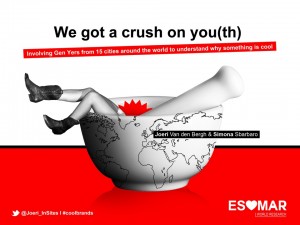 We Got a Crush on You(th)!
We Got a Crush on You(th)!
InSites Consulting’s Joeri Van den Bergh, Elias Veris and Tom De Ruyck, then took us into the minds of Gen Y – the new generation of consumers who are driving brands and determining exactly what “cool” is. Working with Simona Sbarbaro, Head of Research and Strategy MTV Networks, they were able to figure out the 5 key success factors of brands for the Gen Y’ers, noting that if a brand rated high on these five areas then they would not only improve their image, but this new consumer would talk about them (WOM) leading to better brand leverage.
To better understand why these CRUSH factors (Cool, Real, Unique, Self-brand identification and Happiness) have such impact, Insites and MTV teamed up and ran a global reseach community for 6 weeks targeting 150 millenials ages 18 – 29, who lived in 15 different cities on 5 different continents. Using elements of gamification, five chat rooms and a blog, they gathered over 1550 posts giving them some real insight into the way Gen Y thinks. So what did they find?
They found 10 interesting Gen Y evolutions when discussing trends – incuding
- They find social media as their most important news channel
- They feel more ecologically responsible and embrace organic and green products
- They want to experience new things in life – so working/studying abroad is seen as a must
- They want to settle down later
- Urban cycling is king
- Read the paper for the other 5!
They found that Gen Y is a technology generation who wants to be constantly connected, but in turn finds that same need for constant connection addictive. They are stimulation junkies who want actionable change and are individually empowered with a high trust in themselves and their capabilities. They are into customising, co-creation and “smart” everything. They believe that local trends don’t really exist, because if a trend is really is a trend, it will cross borders via social media and will be picked up soon elsewhere too.
On a global level InSites and MTV found that Gen Y has double the amount of branded conversations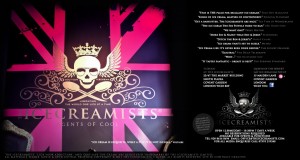 compared to other generations. They love they unexpected like The Icecreamist – a pop up ice cream store in the UK. They choose brands that they can connect with – that “develop, extend or portray thier self identity” and seek brands that arouse passion i.e. make millenials feel happy, or excited or that captures their attention (not an easy task for sure it seems). Remember – the three attributes of being authentic for GenY are quality leadership, heritage, and sincerity!
compared to other generations. They love they unexpected like The Icecreamist – a pop up ice cream store in the UK. They choose brands that they can connect with – that “develop, extend or portray thier self identity” and seek brands that arouse passion i.e. make millenials feel happy, or excited or that captures their attention (not an easy task for sure it seems). Remember – the three attributes of being authentic for GenY are quality leadership, heritage, and sincerity!
Smells like Teen Spirit
Ah, Nirvana – Kurt, Dave And Krist – the band that change youth with the launch of Nevermind and the success of it’s first mainstream single “Smells like Teen Spirit”. Using Nirvana as a backdrop, Madhumita Chakraborty, General Manager – Consumer Insights and Strategy PepsiCo, explored this idea of Youth and what drives them in India with her presentation examining Asian youth in the aftermath of globalisation. Looking through the specific lens of Asia, Madhumita examined “What is teen spirit”, the “Why” and the “Where” behind why Asia is different and “how Marketers are coping with this”.
Asia’s Gen Y population was born into a unique socio-economic time and are living a very different lifestyle from their parents before them. Madhumita attempted to “crack the youth code” by media and youth ethnography, expert interviews and youth studies. What she found was interesting to say the least…
Echoing the sentiment from the previous presentation by Insites and MTV, she found that today’s youth wants what it wants, where it wants it and when it wants it. They are connected and more socially aware of the issues around them – resonating in the small actions they make daily to the benefit of others. They are a “mashable” culture listening to music from around the world but increasingly sourcing it from within the region.
She found that they possess a high rate of optimism and adventure (43% strongly agree they are optimistic about the future and 46% like taking risks). Asian youth believe that education is the route to success – “It is really difficult to get ahead in life without a college education” and “Being able to speak more than one language is important for success”. She also found that they are comfortable living between two worlds – Akon to Bollywood, thrift and thrive, friends and family and the “real me vs. digital me”.
Alternatively she also explored some myths about youth:
Myth: Youth are eternally optimistic
Truth: They in fact often proceed with “cautious pragmatism”
Myth: All millennials are progressive
Fact: About a third are while one third are old fashioned and the last third are 1/3 caught between two worlds
Myth: The purpose of youth is to agitate
Truth: Negotiation is the new mantra
All in all she found that Asian youth today may have global DNA but often like to connect on a local level. They respond well to universal truths that cross borders – glocalisation. While creativity is good – the messaging is far more important to these youth. For them engagement is as important as enjoyment.
To truly succeed – marketers must go beyond the cities and into the smaller towns and rural areas. This will be the new generation in the region that will make its mark i.e. the next wave of potential growth. It’s not just about glocalisation, but development of local and relevant products and experiences.
The programme took off at full sped after lunch with a presentation from Join the Dots: Fuel Efficient Insights – Getting the most of multi approaches. Join the Dots, who by the way did a fabulous Punch and Judy Social Media Guidelines puppet show at the ESOMAR Congress, took us down the qualitative path today discussing an interesting project they did for Metro newspaper whereby they used a wide range of approaches to “really get the most out of the research”. 
Metro, a newspaper for morning commuters, is the world’s largest free newspaper and the third biggest newspaper in the UK, with some 1.3 million copies distributed in 50 cities. It is available online, but is predominately found in the commuter areas such as trains, buses and the tube/metro system. Metro also hosts events and it was in this capacity that Join The Dots came on board to evaluate the success of the EcoVelocity event (bio-friendly motor show) from the consumer perspective. The green agenda has grown rapidly in the UK, with London (and it’s cycling Mayor) leading the way with car usage in London decreasing to 50% and an increase in bike usage (200%) and buses (40%).
Aiming to attract families, in addition to car enthusiasts and environmentalists, this event promoted active participation i.e. test driving and interaction to achieve two key goals: “to raise awareness of eco vehicles and help drive future purchase intention”. By gauging the lead up to the event, the event experience and its impact – Join the Dots chose to evaluate the whole experience through the consumers eyes by using a multi-approach (online pre-survey, on the ground approach, online post survey and contextualisation) framed around a core of use of online insight community.
Their community ran a few days before the event and after and featured a series of discussions to explore how those who attended the event and those who didn’t would react to the name, concept, expectations and the ad campaign. It also included a series of online, offline and multimedia activities. Attendees blogged, video blogged, sms’ed and took photos – which non-attendees were free to comment on. Real insight was gathered from this group – why people couldn’t or would attend – weather, poor transport, bad concept, etc… They even arranged to meet with several community members at the event.
Combined with this community approach, they found that to achieve the best results for the client, they needed to use other research approaches such as observational ethnography, informational interviews, vox pops and pre and post event surveys to help anchor their recommendations. Overall, this approach enables them to “get close to consumers, conduct research in real time, gain a huge amount of depth and insight, make presentations more engaging because of all the stimulus – voxpops, blogs, video blogs…which ultimately gives us a happy client”
An intriguing insight was the recognition that frequently research is really quite removed from the experience itself. Join the dots sought to overcome this through several ways including 1) being at the event 2) using communities and presenting the vox pop findings because clients like to hear from “the horses mouth”
The client quote says it all – “The variety of outputs enabled by the mixed methodology approach has ensured that research findings have been taken on-board throughout the business and more encouragingly, excited people!”
Connecting the Dots
First time presenter, Diaa Rashwan of Savola Foods in Egypt helped us to further extract truths from consumers with his presentation Connecting Dots – A pragmatic approach in using and interpreting findings of qualitative research. Finding our way along the right research path is not always easy. Diaa, in a unique case study surrounding a newly launched brand of oil in Sudan, highlights some pitfalls along the way – when qualitative research can lead to poor decisions when interpreted wrong.
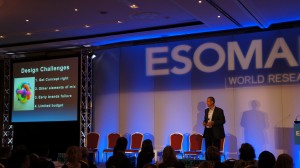 There are 45 million people in the Sudan with 65% living in rural areas and an average per capita income of $1400. 90% of the oil sold in the Sudan in unbranded and not pre-packed. He noted that the habit of buying loose products is an entrenched habit in Sudan and this posed a significant problem for trying to develop the Sudanese market. After two failed product launches – a third and more successful launch was initiated but still with low sales volume and a “disappointing” consumer trail. The Brand team came on board to find out why and to develop solutions.
There are 45 million people in the Sudan with 65% living in rural areas and an average per capita income of $1400. 90% of the oil sold in the Sudan in unbranded and not pre-packed. He noted that the habit of buying loose products is an entrenched habit in Sudan and this posed a significant problem for trying to develop the Sudanese market. After two failed product launches – a third and more successful launch was initiated but still with low sales volume and a “disappointing” consumer trail. The Brand team came on board to find out why and to develop solutions.
The key challenges found were understanding the real reasons behind previous product failures, creating research that results in a new concept that can sway consumers away from long-held habits, properly exploring consumer feedback and making the research fit a limited budget.
By using four qualitative methods – observation at retail points and home visits, in-depth interviews and focus groups – they found a richer understanding of the information obtained and avoided earlier pitfalls of bias and rationalised answers from the consumers. They found that they needed to actualise the real situation of the consumer and launch concepts that seemed credible to them and that reflected their real use of the product in their daily lives.
Key learnings: They needed to see consumers as human beings with multiple interests and not just as consumers. When looking at the concept development, it is key to not be mislead by excitement over the novelty of an item. Make sure you are digging deep to differentiate your product from competitors and previous failures as well as between what is liked as a “nice to have” versus what will really solve issues for the consumer. Remember – the latter is more likely to sell. By putting consumer feedback into context, it helps to extract the real ideas! And lastly, avoid being too innovative for basic markets/consumers.
Inspiring the senses
Masimo Cealti of Symrise and Olivier Schieleit of H,T,P, then took us on a sensory journey, showing how innovation in the sensory business can benefit from new angles and how yes, qualitative research can learn from sensory.
Noting that we can enchant the mind and heart with taste and other senses, Masimo and Olivier brilliantly illustrated their point with the memorable scene from Disney’s Ratatouille where evil food critic Anton Ego is zoomed back in time to memory of eating his mother’s homecooked ratatouille from just one bite of Chef Remy’s (i.e. the rat) take on an old fashioned meal. I love that scene, as did the delegates and believe it truly highlights how the senses can indeed add elements to research that quantitative and other qualitative measures can’t get to.
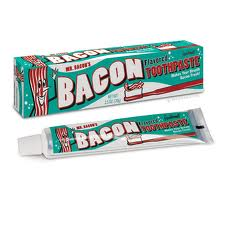 With a focus on oral care, Masimo and Olivier, explained how this industry is one that has become quite niche in taking on board flavours. Posing the question, “Why does the dental care industry insist on making mouth products that make all other things taste HORRIBLE?”, they explored the variety of toothpastes and regional preferences (Japanese have HUGE variety, the US several and Germany – still somewhat conservative – has quite little). People love the smell and taste of bacon….What if there were bacon-flavoured toothpaste? Is that really what people would really want? The use of Qualitative research is good solution for getting to that answer and more.
With a focus on oral care, Masimo and Olivier, explained how this industry is one that has become quite niche in taking on board flavours. Posing the question, “Why does the dental care industry insist on making mouth products that make all other things taste HORRIBLE?”, they explored the variety of toothpastes and regional preferences (Japanese have HUGE variety, the US several and Germany – still somewhat conservative – has quite little). People love the smell and taste of bacon….What if there were bacon-flavoured toothpaste? Is that really what people would really want? The use of Qualitative research is good solution for getting to that answer and more.
As Shane Skillen, chief executive of Hotspex said once “Consider emotion when doing your R&D. Without such consideration. You’re literally missing half the equation”. So, through the use of co-creation workshops they sought to get to the real answers i.e. to ‘build a collaborative and interactive surrounding to inspire the senses of respondents’.
And they found several interesting things. By working with professional flavourists, they distributed sense sticks were with essential oils on it and found that letting the respondents co-create brought about some unique flavor combinations – as people view flavours differently when combined together. They even found that sometimes it may be better to not “advertise” an certain ingredient/flavour – because on a conceptual level it may be rejected, but in the mix with another flavor it may make success.
Some areas where sensory differences made a cultural difference – Functional versus emotional, natural versus experiential, serious versus fun and familiar versus exotic. They found that consumers reacted better to flavours they co-created than those produced by the brand. This is a time consuming process but as Masimonoted he has been doing MR for over 23 years and has “learned the best projects come a live when you give yourself time for thinking and planning. Also when dealing with consumers, remember “Liking is essential, but not sufficient” as the case studies around the failures of new Coke and clear Pepsi highlighted.
The sensory experience is more than isolated liking. It is “simple and complex, ad hoc and holistic, sensual and rational, about body and soul and is biographical and a matter of time and space. By integrating qualitative techniques such as cultural analysis and ethnography, and letting people experiment in non-clinical and familiar settings you will be able to inspire their senses.

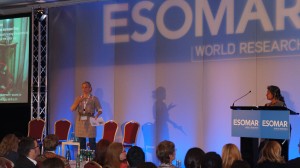
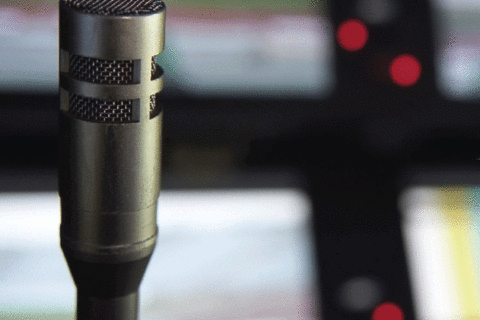

2 comments
[…] cost as small as E two, while a plate of shawerma in an cheap diner will set you back around E5 .The staples of the Egyptian diet are broad ('aish, which also means "life"), fuul and taamiya. Bread…ap and can be prepared in several ways. Boiled and mashed with tomatoes, onions and spices, the […]
What a Conference. I love it.